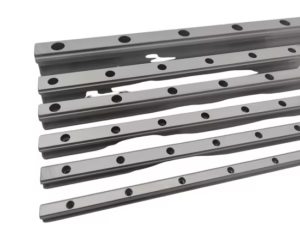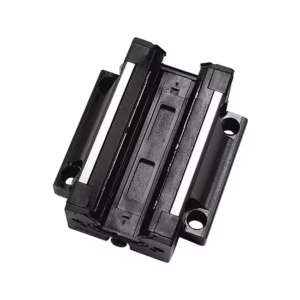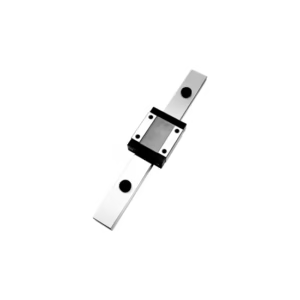Linear slide bearings, also called linear motion bearings, are essential components in mechanical systems requiring smooth and precise linear motion. They are used across industries, including automation, robotics, CNC machinery, and precision instruments. Unlike rotary bearings that handle rotational movement, linear slide bearings guide a component along a straight path with minimal friction.
This comprehensive article explores the types, materials, working principles, advantages, applications, maintenance, and selection criteria of linear slide bearings. Whether you are an engineer, technician, or hobbyist, this guide will provide a deep understanding of linear slide bearings.
Table of Contents
What Are Linear Slide Bearings?
Types of Linear Slide Bearings
2.1 Ball-Type Linear Bearings
2.2 Roller-Type Linear Bearings
2.3 Plain (Bushing) Linear Bearings
2.4 Profile Rail Bearings
Materials Used in Linear Slide Bearings
Working Principle of Linear Slide Bearings
Advantages of Linear Slide Bearings
Applications of Linear Slide Bearings
Design Considerations for Linear Slide Bearings
Installation and Alignment
Lubrication and Maintenance
Common Problems and Troubleshooting
Innovations and Trends in Linear Slide Bearings
FAQs About Linear Slide Bearings
Conclusion
1. What Are Linear Slide Bearings?
Linear slide bearings are mechanical components that allow motion along a straight line. They reduce friction between moving parts and guide motion with precision. Linear slide bearings can carry varying loads, from light to heavy, and are often paired with shafts or rails to create linear motion systems.
Key characteristics:
Low friction movement
High load capacity
Precision guidance
Longevity under proper maintenance
2. Types of Linear Slide Bearings
2.1 Ball-Type Linear Bearings
Ball-type linear bearings use ball bearings enclosed in a cage to reduce friction between a shaft and the moving block. They provide high precision and smooth motion, making them suitable for CNC machines, 3D printers, and precision instruments.
Features:
Minimal friction and smooth movement
High repeatability
Low maintenance
Advantages:
High-speed capability
Accurate positioning
Easy replacement of worn bearings
2.2 Roller-Type Linear Bearings
Roller-type linear bearings use cylindrical rollers instead of balls. These bearings can support higher loads compared to ball-type bearings because the line contact distributes the load over a larger area.
Applications:
Heavy machinery
Material handling equipment
Automotive assembly lines
2.3 Plain (Bushing) Linear Bearings
Plain bearings, also called bushings, are simpler in design and consist of a bearing surface that slides directly along a shaft. They are often made from polymers, bronze, or composite materials.
Advantages:
Cost-effective
Low noise
Can operate in harsh environments
Limitations:
Higher friction compared to ball or roller bearings
Limited speed and precision
2.4 Profile Rail Bearings
Profile rail bearings consist of a carriage that moves along a profiled rail using recirculating balls or rollers. They provide exceptional precision and load-bearing capacity.
Applications:
CNC machining centers
Automated assembly lines
Robotic arms
3. Materials Used in Linear Slide Bearings
The performance and longevity of linear slide bearings depend on their materials:
Steel: High load capacity, durable, used for heavy-duty applications.
Stainless Steel: Corrosion-resistant, suitable for medical or food industries.
Aluminum: Lightweight, used in low-load applications.
Polymers/Plastics: Self-lubricating, corrosion-resistant, low maintenance.
Composite Materials: Combine strength and lightweight properties.
4. Working Principle of Linear Slide Bearings
Linear slide bearings work on the principle of reducing friction between the moving part and the guide shaft or rail. Depending on the type:
Ball Bearings: Balls roll between the shaft and bearing housing, reducing sliding friction.
Roller Bearings: Cylindrical rollers distribute load over a larger area, minimizing wear.
Plain Bearings: The bearing surface slides directly along the shaft, sometimes using lubrication to reduce friction.
The linear motion can be powered manually, hydraulically, pneumatically, or electrically depending on the application.
5. Advantages of Linear Slide Bearings
Smooth Motion: Minimal friction allows precise and controlled movement.
Load Capacity: Can handle high axial and radial loads, depending on type.
Precision: High repeatability and accuracy for automation and CNC applications.
Durability: Long service life with proper lubrication and maintenance.
Versatility: Can be used in horizontal, vertical, or angled motion systems.
6. Applications of Linear Slide Bearings
Linear slide bearings are critical in many industries:
CNC Machines: Provide precise motion for cutting, milling, and drilling operations.
Robotics: Enable accurate and repeatable arm and end-effector movements.
3D Printers: Allow smooth layer-by-layer printing with minimal deviation.
Material Handling: Conveyors and automated storage systems rely on linear bearings.
Medical Equipment: Imaging and surgical machines require precision movement.
Automotive Industry: Assembly lines and inspection systems use linear bearings.
7. Design Considerations for Linear Slide Bearings
When designing or selecting linear slide bearings:
Load Requirements: Determine static and dynamic loads.
Travel Length: Consider the distance the carriage or shaft must move.
Precision Needs: Decide on tolerances and repeatability.
Speed and Acceleration: High-speed systems need low-friction bearings.
Environmental Conditions: Account for temperature, humidity, and corrosive agents.
8. Installation and Alignment
Proper installation ensures optimal performance:
Leveling: Rail or shaft must be level to prevent uneven wear.
Alignment: Misalignment causes friction, noise, and premature failure.
Secure Mounting: Use bolts or clamps according to manufacturer guidelines.
Preload Adjustment: Some systems require preload to minimize vibration and increase rigidity.
9. Lubrication and Maintenance
Ball Bearings: Periodic greasing or oiling keeps motion smooth.
Roller Bearings: Usually pre-lubricated; check for wear periodically.
Plain Bearings: Self-lubricating variants may need less maintenance.
Inspection: Regularly check for noise, vibration, or play.
Replacement: Replace worn bearings promptly to avoid system damage.
10. Common Problems and Troubleshooting
Excessive Friction: Caused by dirt, misalignment, or insufficient lubrication.
Wear and Tear: Occurs over time; inspect bearings regularly.
Noise: May indicate damaged or contaminated bearings.
Play or Backlash: Improper preload or loose mounting can cause unwanted motion.
Corrosion: Use stainless steel or coated bearings in humid or corrosive environments.
11. Innovations and Trends in Linear Slide Bearings
Low-Friction Coatings: Enhance efficiency and lifespan.
Smart Bearings: Integrated sensors monitor wear, temperature, and lubrication.
Hybrid Materials: Combine metals and polymers for reduced weight and improved performance.
Miniaturized Bearings: For compact and precision equipment like medical devices.
Automation Integration: Bearings designed for robotic and CNC systems with higher speeds.
12. FAQs About Linear Slide Bearings
Q: Can linear bearings support vertical loads?
A: Yes, many types, especially roller and profile rail bearings, can support vertical motion.
Q: How do I choose between ball and roller bearings?
A: Ball bearings are ideal for high precision and speed, while roller bearings handle heavier loads.
Q: Are linear bearings maintenance-free?
A: Some polymer or sealed ball bearings require minimal maintenance, but most systems benefit from periodic lubrication and inspection.
Q: Can linear bearings operate in harsh environments?
A: Stainless steel and polymer bearings are suitable for moisture, chemicals, and temperature variations.
13. Conclusion
Linear slide bearings are vital components in mechanical and automation systems. Their ability to provide smooth, precise, and low-friction motion makes them indispensable in industries ranging from CNC machinery and robotics to medical equipment. Understanding the types, materials, applications, and maintenance requirements ensures optimal performance and longevity. By selecting the right linear slide bearing for your needs, you can achieve high efficiency, precision, and durability in your mechanical systems.




